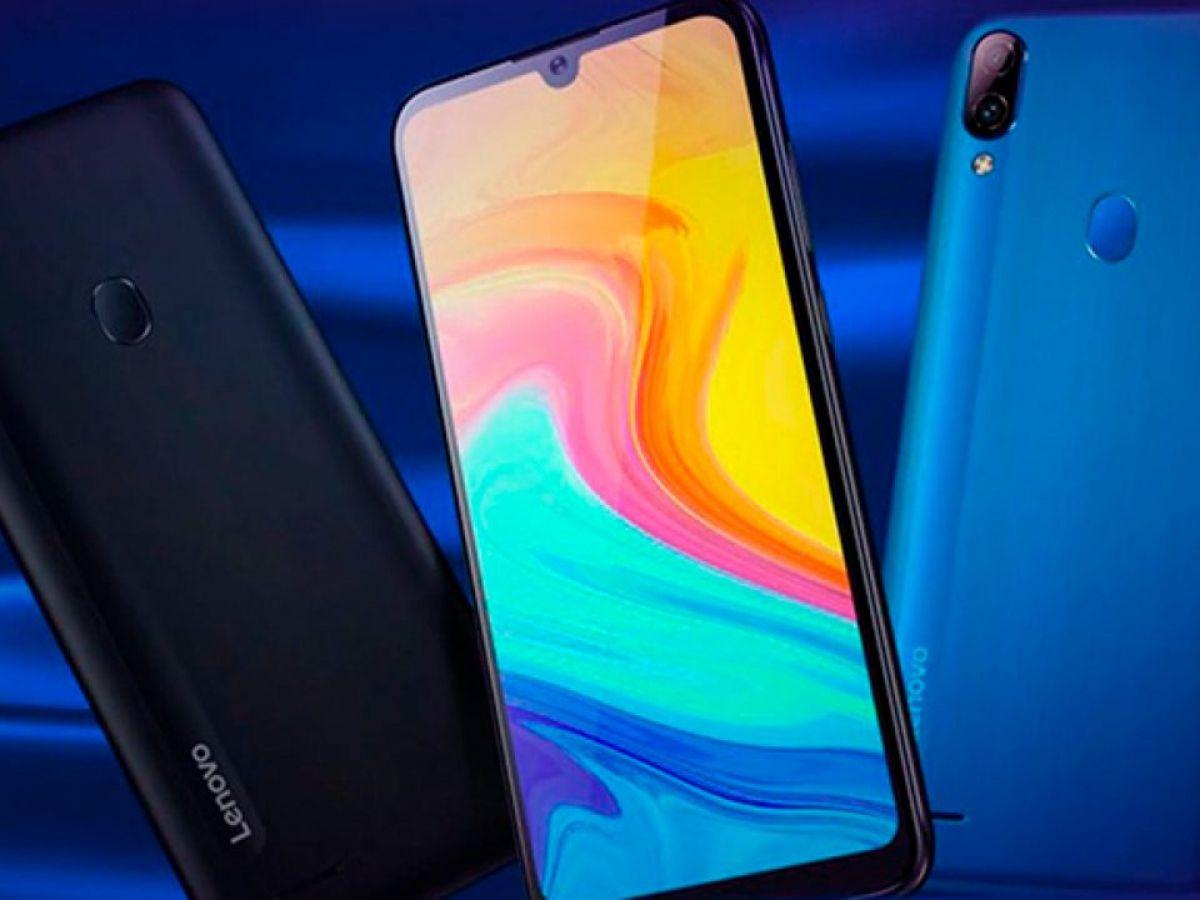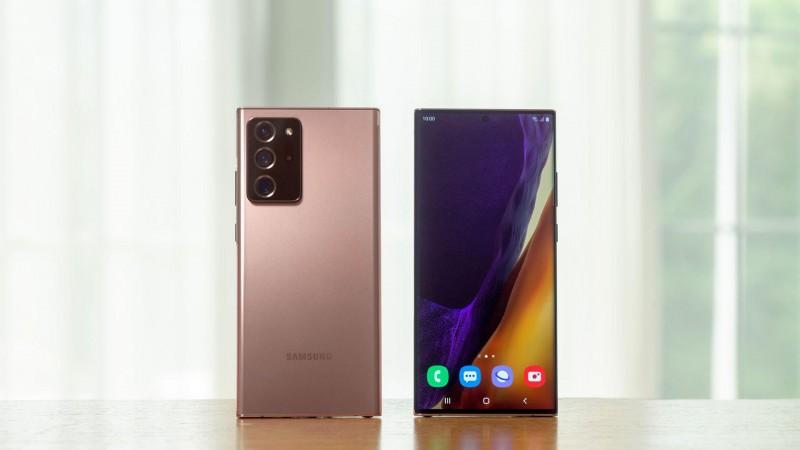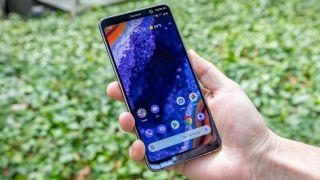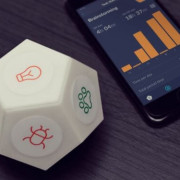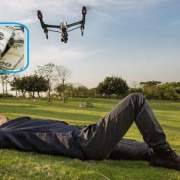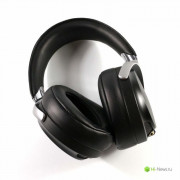Exhibitor resources
Содержание:
- Category 4: Device
- Vivo at MWC 2019
- Nokia
- Phones with folding screens wrapped around the outside
- Nokia at MWC 2019
- Summary
- Analysis and opinion
- LG at MWC 2019
- What was scheduled to launch at Mobile World Congress 2020?
- Xiaomi at MWC 2019
- Huawei
- Sony
- 2016[править | править код]
- HODL REWARDS DISTRIBUTED
- Category 3: Industry X
- 3a. Best Mobile Innovation for Work
- 3b. Best Mobile Innovation for Health and Biotech
- 3c. Best Mobile Innovation for Automotive
- 3d. Best Mobile Innovation for Payment and Fintech
- 3e. Best Mobile Innovation for Smart Cities
- 3f. Best Mobile Innovation for Media and Entertainment
- 3g. Best Mobile Innovation for Building Trust in the Digital Age
- 3h. Tech of the Future Award
- Samsung at MWC 2019
- Oppo at MWC 2019
- Oppo / Vivo / OnePlus
- OnePlus at MWC 2019
Category 4: Device
4b. Disruptive Device Innovation Award
- Apple for Apple Airpods Pro for transparency and noise cancellation
- Qualcomm for Qualcomm Snapdragon X55 5G modem
- Recognising innovation across the industry for Flexible display technology
4d. Best Connected Consumer Device
- Carnival Corporation for The OceanMedallion Wearable Device – on board MedallionClass ships from Princess Cruises
- LetinAR inc for Smart Optic Modules in AR Smart Wearables
- LG Uplus for tethered VR, Pico REAL Plus connected to 5G Smartphone
- Shenzhen Augmented Reality Technologies Co.,Ltd. For RealX – Lightweight and Stylish Mixed Reality Glasses
- Vasco Electronics for Vasco Mini2
Vivo at MWC 2019
Image Credit: TechRadar
Vivo showed off the Vivo Apex Concept at MWC 2018. This was a prototype device with an in-screen fingerprint scanner (before this tech became mainstream) and a pop-up selfie camera, leading to an almost completely bezel-free screen. You couldn’t buy it, but the similar Vivo Nex launched later in the year.
It’s entirely possible that Vivo will have another prototype device ready to show at MWC 2019, though what that might be is still unclear.
The company is launching the V15 Pro soon, a phone which has a 32MP pop-up selfie camera, though this landed on February 20, which is a few days before MWC kicked off.
Nokia
Одна из самых ожидаемых новинок в этом году — многокамерный флагман Nokia 9 PureView. Об этом смартфоне слухи ходят уже очень давно, а утечки даже раскрыли нам его дизайн. Это первый в мире массовый (вероятно) смартфон с пятью основными камерами. Кстати, если вы забыли, то приставка PureView в названии говорит о том, что акцент в этом смартфоне сделан на фото и видео возможности. Можно предположить, что Nokia использует стандартную схему: основная камера, телевик, широкоугольник и модуль TOF для создания 3D объектов и измерения пространства. А вот зачем нужна пятая камера пока можно только гадать. Внутри же у смартфона предполагается вполне стандартный набор: процессор Snapdragon 845, 6 или 8 ГБ оперативной памяти и накопитель на 128 ГБ. В 6-дюймовый OLED экран будет встроен сканер отпечатков пальцев, а объем встроенного аккумулятора составит 4150 мАч. Странно видеть в списке характеристик прошлогодний процессор, но это можно объяснить долгой разработкой устройства. Кроме того есть мнение, что Nokia выпустит более дорогую версию этого устройства с поддержкой 5G и на базе новейшего процессора Snapdragon 855. Представят новинку уже 24 февраля.

Phones with folding screens wrapped around the outside
Not to be outdone, the Chinese smartphone giant Huawei had a foldable phone on show at MWC, too. But where Samsung’s had the screen on the inside, the Mate X looked even more futuristic, with the foldable screen wrapped around the outside.
When shut it has a 6.6in screen on the front and a 6.38in screen on the back. Turn it over and it swaps the screen from the front to the back of the device, for taking selfies or similar. Unfold the screen outwards and you’re left with one large 8in display ready to go. It has cameras on one side and is 5G-capable.
Huawei said it will be available in the summer for €2,299 (£1,975). No one said pushing boundaries was going to be cheap.
Nokia at MWC 2019
Image Credit: TechRadar
We saw lots of Nokia-branded phones at MWC 2018, and MWC 2019 has seen the Finish company prove equally prolific. The highlight of the bunch might is the Nokia 9 PureView – a long-rumored flagship phone that packs five lenses for top-notch photography.
Hands on: Nokia 9 PureView review
However, it wasn’t the only Nokia phone in attendance. Away from the Nokia 9 PureView, it’s all about affordability – the Nokia 1 Plus is a budget phone with a removable cover with a textured feel, the Nokia 4.2 is a promising mid-ranger with specs that could be attractive with the right price tag attached, and the Nokia 3.2 has a whopping 4,000mAh battery with what’s likely to be a pocket-money asking price.
Following a great reception to the and nostalgia-fuelled phones, Nokia also committed to a series of new (or should that be old?) retro phones being on the way.
Summary
Bitcoin set the standard of what digital money could be, but, unfortunately lacks a few of the key characteristics of good money. Released seven years after Bitcoin, MimbleWimble technology was created to solve these privacy and fungibility deficiencies while also providing greater network scalability.
All MWC transactions on the base layer use Greg Maxwell’s CoinJoin with his Confidential Transactions and signature aggregation. Therefore, all transactions keep all data about the sender, receiver and amount private and each MWC is fungible because it does not have a unique transaction history recorded on a public ledger like legacy blockchain technology does.
In the 2018 paper titled Aggregate Cash System: A Cryptographic Investigation of Mimblewimble, Fuchsbauer, et. al. concluded, «In this paper, we provide a provable-security analysis for Mimblewimble. We give a precise syntax and formal security definitions for an abstraction of Mimblewimble that we call an aggregate cash system. We then formally prove the security of Mimblewimble in this definitional framework. Our results imply in particular that two natural instantiations (with Pedersen commitments and Schnorr or BLS signatures) are provably secure against inflation and coin theft under standard assumptions.»
The MWC development team seeks to innovate both technologically and economically in order to bring out all of the MimbleWimble protocol benefits. The MWC team has already created a fully functional GUI wallet, developed a method for secure offline cold storage of MWC, completed a MWC/BTC atomic swap on testnet and is investigating multi-sig transactions and Lightning Network.
There are many potential places development resources can be allocated. They will be chosen based on market needs. Highest priority will be given to requests that primarily benefit and come from the buyers and holders of last resort.
While the MWC Team will carefully consider all opinions; they realize the most important arbiter of success for this monetary product will be the aggregated decisions of the market as found in the orderbook.
The MWC network was launched in November 2019 and has functioned flawlessly with 100% uptime. The MWC Team considers the protocol ossified and currently sees no need for a future hard or soft fork unless a defensive action were required to protect the network.
Analysis and opinion
The Nokia 3310 may be matched with new retro phones – Image Credit: TechRadar
Want to delve deeper into the key stories from MWC? Our team of experts at TechRadar offer up their thoughts and opinions on the top stories from MWC 2019 below:
- This is the best ‘unknown’ camera phone of MWC 2019
- HTC 1 Exodus blockchain phone could help build the next internet
- The success of augmented reality means it may be time to rethink the way we type
- The Royole FlexPai is improved, but still doesn’t feel like a Galaxy Fold rival
- USB 3.2 to take over the world’s computers – but not how you think
- There are no smartwatches or fitness bands at MWC 2019, and it’s not a problem
- LG G8’s top feature is exactly why brands shouldn’t ‘innovate’ just because they can
- Xiaomi Mi 9 and Samsung S10 5G will make you want to use wireless charging
- Nokia promises to ‘double-down’ on retro phone reboots in 2019
- LG hints strongly at flexible phone plans, but says time isn’t right
- What we’ve learned about the OnePlus 7 from the OnePlus 5G prototype
- Sony will make a 5G phone – but only when the tech rolls out
- BMW’s virtual co-driver is helpful and charming – so do I have to be rude to it?
LG at MWC 2019
The LG G8 ThinQ arrived at MWC 2019. Image Credit: TechRadar
The LG G8 ThinQ landed at MWC 2019, and while it didn’t have quite as flashy a feature-set as the top-of-the-line competition, it’s trying some interesting things.
First up is Hand ID, a new way to unlock your phone with a wave over the phone’s screen as it scans the veins in your palm. It worked only temperamentally during our brief test, but the phone’s hole-less vibrating top speaker impressed, as did its innovative video portrait mode. A slightly modified version, the LG G8S ThingQ, drops to a Full HD resolution for a cheaper price tag.
- Hands on: LG G8 review
- Hands on: LG G8S Thing Q review
The crazy LG Dualscreen – Image Credit: TechRadar
LG has also announced its LG V50 5G phone at the event, one with a 4,000mAh battery, a vapor cooling chamber, and a Snapdragon 855 chipset.
It’s a powerful 5G phone with a twist – it can be paired with the detachable DualScreen case attachment, quite literally adding another optional screen to your device. It’s the Pimp My Ride of phones. Xzibit would be proud.
- Hands on: LG V50 ThinQ review
- Hands on: LG Dualscreen first look
LG also discussed the potential for an LG foldable phone at the show. With its expertise in OLED technology, it certainly has the know-how to deliver one to match its rivals. But for now, it’s saying the ‘time isn’t right.’
There’s a little room at the budget end of the scale from LG too – if you’re after a longer 18:9 display and don’t mind losing out on a HD screen, the LG K40 might make a nice backup away from your flagship device:
Hands on: LG K40 review
What was scheduled to launch at Mobile World Congress 2020?
Here’s a rundown of what we were expecting to see, with more details below. Bear in mind that many of these devices are rumoured rather than confirmed:
- Sony Xperia 5+
- Sony Xperia mid-range update
- Xiaomi Mi 10
- Xiaomi Mi 10 Pro
- Nokia 8.2
- Nokia 5.2
- New Nokia Original
- Oppo Find X2
- LG G9 ThinQ
- LG V60 ThinQ
- Huawei Mate XS
- Honor View 30 Pro
- Honor 9X Pro
- Moto G8
- Moto One 2020
- Moto Edge/Edge+
ONLINE ONLY: 24 February, 08:30 CET
Sony Mobile always launches new handsets at MWC and we’re expecting a flagship update for 2020, most likely building on the Xperia 1. Sony will be hosting an online press conference to launch its new products. That might be an Xperia 2 (or the Xperia 1 second-gen) and we’ve also seen the name Xperia 5 Plus floating around. It’s likely to be powered by the Qualcomm Snapdragon 865. There’s also rumour of a mid-range Snapdragon 765 device, but very little to go on in that regard, perhaps an Xperia 10 update. Some commentators are saying that we’ll see three new phones.
The Xiaomi Mi 10 was unveiled in China on 13 February, with the global launch originally being scheduled for 23 February. That’s now been cancelled, with Xiaomi confirming that it will be rearranging a new event at some point in the future. The Xiaomi Mi 10 and Mi 10 Pro are flagship level handsets, with a 6.67-inch display, 108-megapixel camera and running on the Qualcomm Snapdragon 865 with 5G.
HMD Global who makes Nokia phones has cancelled the planned launch of its new products. The company has said it will update us on when it will announce its new products in the near future. We’ve heard that Nokia will be launching an affordable 5G handset in 2020, on the Snapdragon 765 platform. It’s reported to be called the Nokia 8.2, but few details are currently known. We’re expecting updates across its range of affordable Android One phones, perhaps with a Nokia 5.2 launching — and we’re also expecting a Nokia Originals, a new version of a classic Nokia phone.
Oppo was due to launch the Oppo Find X2 at Mobile World Congress in 2020. The Find X2 is rumoured to sit on the Snapdragon 865 platform. It’s also rumoured to have a camera under the display for a notch-free finish. With the cancellation of Mobile World Congress, the company has postponed its launch plans.
LG was one of the first to withdraw from Mobile World Congress because of the coronavirus and won’t launch the anticipated new devices at the event — rumoured to be the LG G9 ThinQ and LG V60. LG has confirmed it will be holding launch events at another time.
23 February, 14:00 CET
We’d always expected the Huawei P40 and P40 Pro to be announced in March 2020, so MWC was likely to be around other devices — perhaps a MateBook laptop or maybe the updated folding phone, the Huawei Mate Xs. So far we’ve heard nothing about Huawei’s plans — we don’t know if it’s still hosting an event or not, or if it has other plans.
24 February, 17:30 CET
Honor was the first company to confirm an event at Mobile World Congress and so far we’ve heard nothing about cancelling those plans, but we’ve asked. We were expecting the announcement of the View 30 Pro and the 9X Pro for Europe.
Motorola was holding a press event in Barcelona, but that’s now cancelled — and Motorola has confirmed to us that it will be rescheduling. Rumours suggested that Moto might be launching a flagship device called the Motorola Edge. This new phone might be joined by the Moto Edge+, although it might actually be called the Moto One 2020. At any rate, we’re expecting a Motorola flagship phone.
Qualcomm will be powering many of the flagship devices that get launched around the time of MWC 2020. While it’s already announced its core smartphone hardware for 2020, the company has already teased that it will be showing off a reference design for its next-gen expanded reality headset, powered by the new Snapdragon XR2. For Qualcomm this is a loss of the opportunity to push 5G and the new devices that it’s powering.
Xiaomi at MWC 2019
Image Credit: TechRadar
Xiaomi has officially started selling products in the UK at the end of 2018. It’s been established in other parts of Europe for a while, and at MWC 2019 we found out that it is bringing the Xiaomi Mi 9 to western markets. It features a 48MP main camera with a uniquely curved backplate and is up for pre-order immediately at €449 (which converts to around $500, £390, AU$715).
Hands on: Xiaomi Mi 9 review
Xiaomi is known for delivering great value handsets, including flagships that massively undercut most rivals, so it might launch some bargains. One of those cut-price deals might be a foldable phone, as it’s working on one of its own.
Huawei
В прошлом году Huawei не стала привозить на MWC свой флагман, перенеся презентацию в Париж на месяц позже. Однако, в этот раз все может быть иначе и новый Huawei P30 Pro могут показать именно в Барселоне, за день до открытия выставки
Причина проста — Samsung проведет отдельное мероприятие в США где и покажет новый Galaxy S10, а значит «воевать» за внимание прессы во время выставки с корейцами не придется. При этом Huawei покажет сразу три версии своего нового флагмана: P30 Pro, P30 и P30 Lite
Больше всего новых технологий и фишек получит версия Pro. Смартфон оснастят большим 6,5 дюймовым OLED экраном с челкой, в которой будут спрятаны датчики 3D сканирования лица. Внутри у этого смартфона будет собственный процессор Kirin 980, до 12 ГБ оперативной памяти и накопитель на 128 ГБ.
А главной изюминкой Huawei P30 Pro станет новая основная камера с четырьмя объективами. Три камеры уже вполне привычны: основная камера, зум и широкоугольник, а теперь еще и совершенно новая фишка перископный объектив. Он позволит получить многократное увеличение картинки без потери качества. Младший Huawei P30 получит всего три основные камеры — точно такие же, как и в Mate 20 Pro, которые сейчас лидируют в рейтинге DxOMark. Железо этот смартфон тоже унаследует от последней линейки Mate, а вот экран тут будет OLED с диагональю 6,1 дюймов с каплевидными вырезом. То есть безопасная 3D разблокировка по лицу по-прежнему удел версий Pro. Ну и третья новинка P20 Lite получит более простую начинку, три основные камеры и 6-дюймовый IPS экран.

Sony
Японский гигант привёз на выставку, как и всегда, несколько новых смартфонов. Первый — флагманский Xperia 1 с экраном 4K HDR OLED 6,5″ и сооотношением сторон 21:9, которое покрыто Corning Gorilla Glass 6. Разумеется, как и любой флагман Sony, Xperia 1 защищён от влаги и пыли по стандарту IP65/IP68.
Самое главное — камера. В Sony Xperia 1 стоит тройная камера с разрешением 12 Мп из трёх объективов: 16-миллиметровый сверхширокоугольный объектив для съёмки пейзажей дополнен универсальным 26-миллиметровым, а также 52-миллиметровым телеобъективом (эквивалент 35-миллиметрового объектива для полнокадровой матрицы). Смартфон Sony Xperia 1 работает на базе Qualcomm Snapdragon 855. Кроме того, в нём стоит 6 Гбайт оперативной памяти и 128 Гбайт памяти для приложений, которую можно расширить с помощью карт microSD (до 512 Гбайт). В смартфоне есть Wi-Fi, Bluetooth 5.0 и NFC.

Смартфоны Xperia 10 и 10 Plus оснащены безрамочным широкоформатным дисплеем Full HD+ с соотношением 21:9. Интуитивный многооконный пользовательский интерфейс Sony позволяет эффективно разместить сразу два приложения на 6.0″ дисплее Xperia 10 или 6.5″ дисплее Xperia 10 Plus. Экраны обоих смартфонов защищены стеклом Corning Gorilla Glass 5.

В Xperia 10 и Xperia 10 Plus установлены двойные модули камер, но с разным разрешением. В Xperia 10 стоит модуль 13 мегапикселей 1/3.0″ + 5 мегапикселей ¼″, сделанный для создания качественного эффекта боке. А в Xperia 10 Plus установлена камера 12 мегапикселей ½.8″ + 8 мегапикселей ¼″, в которой реализован двукратный оптический зум и боке. Фронтальные камеры в смартфонах одинаковые и их разрешение составляет 8 мегапикселей (¼.0″). Все камеры новых смартфонов оснащены электронной стабилизацией SteadyShot, которая исключает размытие видео даже при съёмке в движении.
2016[править | править код]
MWC 2016 проходил в Барселоне с 22 по 25 февраля. Среди экспонентов были такие российские компании, как Яндекс, Лаборатория Касперского, СвязьКом, Инфосистемы Джет, НИИ СОКБ и другие.
На выставке было представлено множество инновационных смартфонов и гаджетов. Награду «Лучший смартфон» получил LG G5. Смартфон оборудован 5,3-дюймовым дисплеем с разрешением Quad HD и функцией Always On, процессором Qualcomm Snapdragon 820, 4 ГБ оперативной и 32 ГБ встроенной памяти с возможностью расширения до 200 ГБ. Разрешение основной камеры составляет 16 Мп (угол обзора — 78 градусов), разрешение фронтальной — 8 Мп (угол обзора — 135 градусов).
Главной «фишкой» устройства однозначно является его необычный модульный дизайн. Нижняя грань G5 легко отсоединяется, а вместо неё можно установить модуль.
Ещё одним главным игроком выставки стал Samsung Galaxy S7 и S7 Edge. Флагманы южнокорейской компании работают на новом Exynos 8890 либо Qualcomm Snapdragon 820 (в зависимости от региона), имеют 5,1-дюймовый (S7) и 5,5-дюймовый (S7 edge) Super AMOLED-экраны с разрешением QuadHD, 4 Гб оперативной и 32 Гб встроенной памяти. Разрешение основной камеры составляет 12 Мп, фронтальной — 8 Мп.
HODL REWARDS DISTRIBUTED
As of block 291,350, all 2,000,000 MWC had been successfully claimed from the 2,000,000 HODL Program fund.
June 2020. 1,495,765.602 MWC claimed. Based on output balances registered at the time of the output scan which completed at 2020-06-01 16:35:12.0. UTC. Registered Class 1 and Class 2 MWC Hodlers could claim and receive 0.175 MWC per MWC registered. Claims started shortly before block 290,000 and had to be submitted by block 330,000. This claim included both HODL and unclaimed airdrop funds.
May 2020. 774,065.022714794 MWC claimed. Based on output balances registered at the time of the output scan which completed at 2020-05-19 01:03:50.0 UTC. Registered Class 1 MWC Hodlers could claim and receive 0.10 MWC per MWC registered. Claims started shortly before block 273,000 and had to be submitted by block 314,760.
May 2020. 7,699.727304863 MWC claimed. Based on output balances registered at block 254,000. Registered Class 1 MWC Hodlers could claim and receive 0.001 MWC per MWC registered. Claims started shortly before block 255,500 and had to be submitted by block 305,000.
Category 3: Industry X
3a. Best Mobile Innovation for Work
- China Eastern Airlines, China Unicom & Huawei for 5G Smart Travel in Airport
- China Mobile, ZPMC & Huawei for the world’s most widely deployed 5G Smart Port solution
- Huawei for Huawei Site Digital Twins for reshaping digital delivery mode
- ZTE for 5G End-to-end Network Slicing
- ZTE for ZTE XRExplore
3b. Best Mobile Innovation for Health and Biotech
- Ericsson and Brighter for Actiste the world’s-first unified IoT diabetes-care solution
- Flare for World-Class Emergency Response Technologies
- Nymbl Science for Using Smartphone technology to Prevent a Million Falls
- Samsung Electronics Co., for Samsung HeartWise
- Vimplecom for Beeline & “Liza Alert”
3c. Best Mobile Innovation for Automotive
- Eye-Net Mobile Ltd for Eye-Net Protect
- KT for 5G Mobility Makers
- SK Telecom for Smart Fleet: Data Analytics Platform for Intelligent Mobility
- Tata Communications for MOVE
- ZTE for Intelligent and Secure 5G-V2X Solution
3d. Best Mobile Innovation for Payment and Fintech
- Juvo for Financial Identity as a Service (FiDaaS)
- AsiaHawala and Comviva for AsiaHawala service powered by Mobiquity
- fonYou for iCarrier
- Safaricom for Fuliza
- Samsung Electronics Co., for Samsung POS
3e. Best Mobile Innovation for Smart Cities
- Bahia State Government & Huawei for an intelligent connectivity platform to safeguard the world’s largest street party
- China Mobile Group Zhejiang and Huawei for NB-IoT Smart City Fire Control
- LG Uplus for World’s first linemarker underground antenna and excavation sensing device
- Tata Consultancy Services for TCS DigiFleet
- Telensa for Building Smart Cities with Smartphone AI Technology
3f. Best Mobile Innovation for Media and Entertainment
- Latvijas Mobilais Telefons for LMT home TV delivered over the mobile network
- LG Uplus for U+VR 5G
- Samsung Electronics for Samsung Galaxy Fold
- SK Telecom for 5GX Multiview: Innovating Viewer Experience
- ZTE for 5G Live TV (Multi-view live broadcast service)
3g. Best Mobile Innovation for Building Trust in the Digital Age
- CHT for Voice Assistance APP for the Visually Impaired
- IDEMIA for IDEMIA Digital Identity Platform
- KT for GiGAstealth – Invisible IoT Device
- Samsung Electronics for Knox Security Platform
- Wistron NeWeb Corp. for Secured IoT End-point with Blockchain Enablement
3h. Tech of the Future Award
- Huawei for Atlas 900 AI Cluster – The Pinnacle of AI Compute for Future Inclusion
- KT for GiGAsound Doctor – Self-Learning Platform For Predictive Maintenance
- Singtel for UNBOXED
- SK Telecom for eSpace: Realizing Virtual World with 5G
- Vimplecom for Beeline & “Liza Alert”
Samsung at MWC 2019
The Samsung Galaxy Fold has already been announced. Image Credit: Samsung
Samsung is set for a surprisingly quiet MWC, as it announced the Galaxy S10, Galaxy S10 Plus, Galaxy S10e, Galaxy Fold, Galaxy Watch Active, Galaxy Fit and Galaxy Fit E ahead of time on February 20.
Samsung did however use MWC 2019 as a platform to launch a refreshed line-up of its mid-range A series of devices. The Samsung Galaxy A50 is the pick of the bunch, while the Samsung Galaxy A30 is promising too, with its vibrant Super AMOLED screen, large battery and responsive user interface (even if its camera effects are a little bit unreliable).
- Hands on: Samsung Galaxy A50 review
- Hands on: Samsung Galaxy A30 review
There’s still an outside chance of a tablet too (although it only launched the Galaxy Tab S5e a few weeks ago) — but don’t hold your breath for either of these.
Oppo at MWC 2019
Image Credit: TechRadar
Oppo hasn’t launched a smartphone at MWC 2019. Rather it’s confirmed it will launch a 5G phone in the future, and it showed off a new camera technology.
During its «Innovation Event» on February 23 in Barcelona, Spain, we saw Oppo’s new smartphone camera that features a 10x lossless zoom.
The technology utilizes three camera modules with a main camera, which weighs in at 48 megapixel for capturing everyday images, while a second 16mm, 120-degree wide-angle lens is designed to take in more of whatever you’re trying to shoot. The third, and final, snapper is a telephoto lens with a focal length of 160mm.
What was extra intriguing however was an alleged ‘leak’ of an Oppo concept phone, featuring this year’s hottest technology – a foldable screen. Could this be something we’ll see in the future from Oppo?
Oppo / Vivo / OnePlus
Oppo представляла свой стенд на MWC уже несколько раз. Но пока компания, ориентированная больше на внутренний рынок, ни разу не показывала в Барселоне свои новые смартфоны. В этом году все может измениться. Менеджер по продуктам компании Чак Вонг подтвердил голландскому сайту Tweakers, что Oppo представит в Барселоне свой первый складной смартфон. Пока нет никаких подробностей об этой новинке, но сам факт такого мероприятия, которое пройдет 23 февраля, не может не радовать. Кроме Oppo на MWC свои стенды будут у Vivo и OnePlus. Все эти три компании входят в один большой концерн BBK. Vivo может привезти на выставку Nex 2 и свой новый концепт смартфона без кнопок и разъемов Vivo Apex 2019. Ну а OnePlus, любимый бренд гиков, на MWC может показать свой первый смартфон с поддержкой 5G. Речь не идет о новом OnePlus 7, который вероятно будет готов только к лету. Скорее всего компания покажет обновленную версию OnePlus 6T с поддержкой сетей пятого поколения.

OnePlus at MWC 2019
Image Credit: TechRadar
While the OnePlus 7 is unlikely to launch until mid-2019, we might see the beginning of a new range from the company at MWC 2019.
Specifically, we already know that OnePlus is working on a 5G handset for launch in 2019, and we got to take a quick look at a prototype for the device whilst at the show. Here’s what our man on the ground John McCann thought of it:
What we’ve learned about the OnePlus 7 from the OnePlus 5G prototype
We don’t know much else about the handset, but apparently OnePlus has chosen to launch it separately from the OnePlus 7 as the addition of 5G could push the price up beyond what it typically charges.
In other words, this phone might not be as much of a bargain as the company’s main flagship range.
